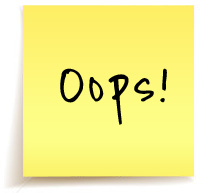Drie verskillende maniere om 4-syfer getalle bymekaar te tel
Daar word verwag dat kinders teen Graad 5 verskillende maniere kan gebruik om nommer probleme op te los. Ons vind gewoonlik dat ’n kind gemaklik is met een manier en dit gebruik om elke probleem korrek op te los.
Die vrae in eksamens en toetse vra egter dat die probleem opgelos moet word deur die gebruik van ’n spesifieke metode. Dit is hoekom u kind moet weet hoe om elke metode te gebruik, al gebruik hulle die meeste van die tyd hul gunsteling een.
Kom ons kyk na hierdie probleem: 3 362 + 2 486 = ?.
Ons kan dit oplos deur een van hierdie metodes te gebruik. Elkeen kom uiteindelik op dieselfde antwoord neer.
Metode 1: Breek beide nommers op
Deur hierdie metode word albei 4-syfer getalle afgebreek in hul plekwaardes.
3 362 + 2 486
= (3 000 + 300 + 60 + 2) + (2 000 + 400 + 80 + 6)
= (3 000 + 2 000) + (300 + 400) + (60 + 80) + (2 + 6) → Tel dieselfde plekwaardes by mekaar.
= 5 000 + 700 + 140 + 8
= 5 000 + 800 + 40 + 8
= 5 848
Metode 2: Breek die tweede nommer op en tel dit in stukkies by mekaar
Met hierdie metode word slegs die tweede 4-syfer nommer afgebreek. Tel elke plekwaarde een op ’n slag bymekaar.
3 362 + 2 486
= 3 362 + (2 000 + 400 + 80 + 6)
= (3 362 + 2 000) + 400 + 80 + 6
= (5 362 + 400) + 80 + 6
= (5 762 + 40) + 40 + 6 → Breek ’n nommer op om die volgende 10e , 100e of 1 000e op te maak.
= 5 802 + 46
= 5 848
Metode 3: Deur kompensasie
Ons gebruik die wet van kompensasie om een van die nommers makliker te maak om bymekaar te tel. Ons doen dit deur by een nommer op te tel, en deur dieselfde getal van die ander nommer af te trek.
3 362 + 8 ⇒ 3 370 + 30 ⇒ 3 400
2 486 – 8 ⇒ 2 478 – 30 ⇒ 2 448
3 362 + 2 486 ⇒ 3 400 + 2 448
= 5 848
Blogs
Learning through play
Children learn and understand concepts and emotions better through play. Playing is how they learn, it comes naturally to them. Sometimes it might not look like much is happening, but playing develops their brains and allows children to use all their senses - hearing, seeing, tasting, touching,... Read the full article
Children learn and understand concepts and emotions better through play. Playing is how they learn, it comes naturally to them. Sometimes it might not look like much is happening, but playing develops their brains and allows children to use all their senses - hearing, seeing, tasting, touching,... Read the full article
It can be confusing to keep up with all that is needed for your child to develop and grow at school.
Here are some tips to help you to help your child: If you are unsure of the concepts yourself ask the teacher to show you – remember the teacher works with these concepts on a daily basis. If you are unsure of how to teach or... Read the full article
Here are some tips to help you to help your child: If you are unsure of the concepts yourself ask the teacher to show you – remember the teacher works with these concepts on a daily basis. If you are unsure of how to teach or... Read the full article
The Parent
In this phase your role remains to teach, guide and assist your child in their educational, physical, emotional and social development. You should also still work with the teacher so that your child progresses confidently through school. It is advised to continue checking homework and assisting when necessary. If your child is battling... Read the full article
The Parent
The first step as a parent is realising that your child is not an independent learner during Foundation Phase. This implies that your child needs to be taught and helped in their learning.
The second step is to realise that your role is to teach, guide and assist your child in their educational, physical, emotional and social... Read the full article
The second step is to realise that your role is to teach, guide and assist your child in their educational, physical, emotional and social... Read the full article
Memory training games
There is no such thing as a bad memory. Just like any other muscle, your brain must be exercise and developed every day. Keep it in training! It will get used to repeated exercises and needs new challenges every now and again to improve and stay at its best.
From an early age, I started ‘training’ my... Read the full article
From an early age, I started ‘training’ my... Read the full article


 Oops! We can’t find the article you are looking for. Please try a different Subject, Grade or Title.
Oops! We can’t find the article you are looking for. Please try a different Subject, Grade or Title.